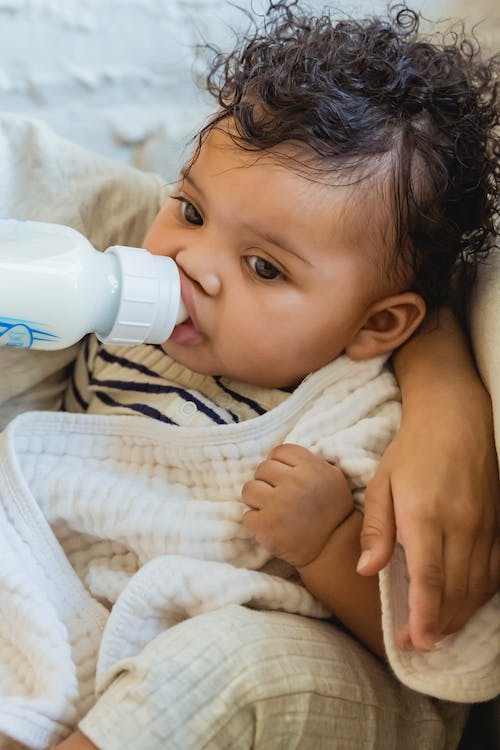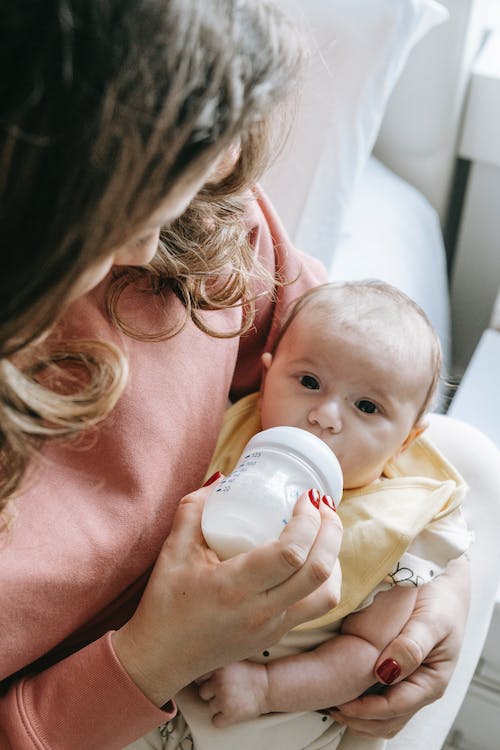
How to Feed a Baby
How to Feed a Baby
When it comes to feeding your baby, you’ll have to choose between breastfeeding and bottle feeding. If each mother is free to do what she wants in terms of feeding her baby, it is still better to know these basic rules and to know what are the advantages and disadvantages of each process. This article is just the beginning of a series of blogs on baby health to tell you everything about baby and child feeding. To begin, today we will look at how to feed baby.
For a mother, feeding her baby is a typical concern. When should you give your baby the breast or the bottle? In fact, the child himself will decide and ask for it at the beginning.
Baby feeding: on demand
Babies know how much and what they need. And every child has different needs. The best way to feed babies is to feed them on demand at first. On average, an infant will take about 6 feedings per 24 hours for the first two months and sometimes more at the very beginning. Each child has his way of expressing himself, often in short cries that get louder.
For babies who are hungry and cry frequently, however, a minimum of 2.5 hours is needed between feeds to allow digestion and the stomach and breasts to settle.
Breastfeeding on demand is true both day and night. It is unnecessary to wake up a child to feed him or her unless he or she is premature or on medical advice: a hungry baby will wake up and cry! Note: if the child wakes up during the night, it may be due to hunger or thirst, colic, a full diaper, etc.
From the age of two or three months, you should gradually regulate your baby’s feeding so that it becomes more regular and fits in with the alternation of day and night and the family’s rhythm. Baby can be woken up to feed him if he sleeps too long during the day.
Good to know: to help baby adapt to the night/day alternation, we don’t make him sleep in the dark during the day, and we don’t worry about making noise while resting. Only the night will be dark and silent.
Milk: the only food until 4 months

Up to 4 months, milk is the only food needed by infants. It is perfectly adapted and covers all their nutritional needs.
The choice between breastfeeding and bottle feeding is a personal decision. Breast milk is the best food for babies. But breastfeeding, to be fully effective, must be a moment of pleasure for both mother and baby.
In addition, the mother must produce enough milk and sufficient consistency for her child’s needs, which is not always possible, especially if the baby or the mother is not in perfect health.
Everyone should choose the type of breastfeeding they feel is most appropriate.
Diversifying baby’s diet

Milk is the basic food until the age of 1 year. But from 4 to 6 months of age, babies can start to diversify their diet.
Food diversification should not begin before 5 or even 6 months of age if the child is at risk of allergies (history of allergies in the family). However, avoiding an allergy by excluding certain foods or taking food supplements cannot be recommended. On the contrary, it is recommended to introduce foods known to be allergenic from the beginning of food diversification with, for example, small quantities of peanuts and well-cooked eggs.
During diversification, the introduction of foods should be gradual. As a general rule, it is not advisable to introduce more than one food per week.
You can try new textures for 6-8 months (about two months after the start of diversification).
It is also recommended to systematically add fat to homemade or commercial formulas that do not contain fat. On the other hand, You should introduce sweet products as late as possible and in a limited way.
The experts also advise offering a new food often (up to ten times): “a baby may need time to appreciate it”, but not to force a child to eat. In addition, it is important to “trust the child’s appetite” and be attentive to signs of satiety. Finally, the environment of the meal is essential, especially in avoiding the presence of screens.

Why Is My Toddler Refusing to Eat?

How to Feed Baby
You May Also Like

How Quickly Do Babies Pick Up Languages
2022-02-15
Young Couple: How Many Children Would You Like To Have?
2022-02-11